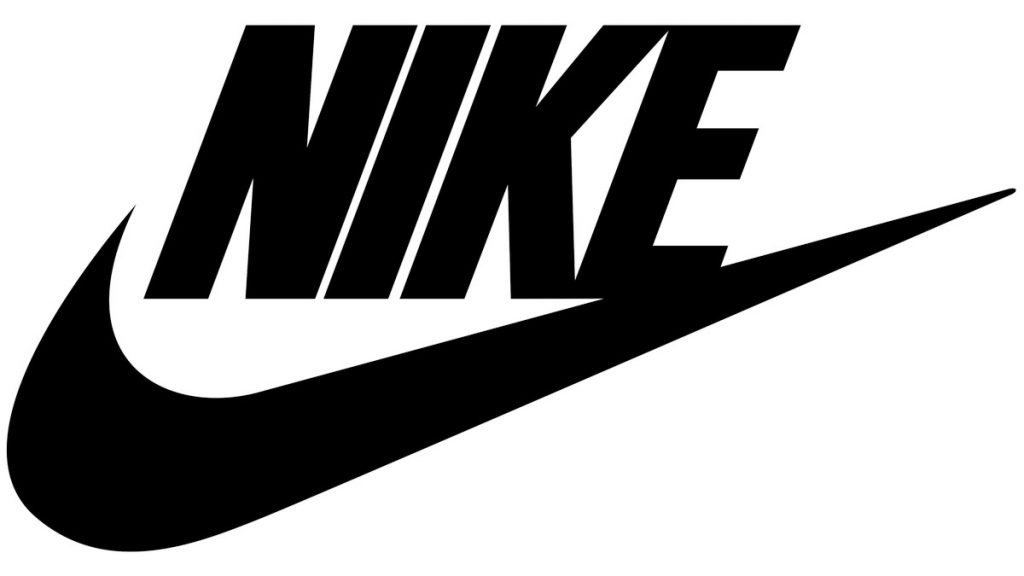Table of Contents
What is International Marketing?
International marketing is the process of marketing goods or services to customers in more than one country. This process can be as simple as selling goods to customers in a neighboring country or as complex as selling goods to customers in multiple countries around the world.
Companies that engage in global marketing must be aware of the cultural, political, and economic differences between countries. They also need to be aware of the different marketing channels that are available in different countries.
International marketing is the process of adapting a company’s products, services, and marketing strategies to fit the needs and wants of customers in foreign markets. To put it simply, global marketing involves marketing products to people all over the world.
It involves all aspects of marketing, including market research, product development, advertising, promotion, pricing, and distribution. International marketing is important for companies that want to expand their operations into new markets.
Characteristics of International Marketing
There are a few key characteristics that distinguish international marketing from other types of marketing. These characteristics include:
- A global perspective: Global branding requires a global perspective. Companies must be aware of the different cultures, customs, and laws in different countries.
- International markets: International marketing involves marketing products in multiple countries. This can be done through a variety of channels, including online channels, brick-and-mortar stores, and distributors.
- International competitors: International marketing also involves competing with other companies from around the world. Companies must be aware of the different strategies that their competitors are using in order to gain a competitive advantage.
- International environment: The international environment is constantly changing. Political and economic factors can impact the success of a company’s international marketing efforts.
The purpose of international marketing is to develop a global strategy that will allow a company to enter new markets and compete effectively with its rivals. International marketing is a necessary part of doing business in today’s global economy.
Why is International Marketing Important?
There are a few reasons why international marketing is important for companies. First, it allows companies to expand their operations into new markets. This can help them to grow their business and increase their profits. Second, international marketing helps companies to build brand awareness.
Building brand awareness is important because it helps to attract new customers and retain existing ones. It also helps to create a positive image for the company, which can improve its overall reputation. Third, international marketing can help companies to reduce their costs.
This is because they can take advantage of economies of scale. By producing large quantities of goods, companies can reduce their per-unit costs. Fourth, international marketing helps companies to diversify their risks.
Diversifying risks is important because it helps to protect a company from the potential impact of events in one particular country. For example, if a company’s sales in Country A decrease, the company can offset this loss by increasing its sales in Country B.
International marketing is important for companies that want to expand their business into new markets. It is a necessary part of doing business in today’s global economy.
Types of International Marketing
1. Export
Exporting is the process of selling products or services in another country. This can be done through a variety of channels, including online channels, brick-and-mortar stores, and distributors.
2. Licensing
Licensing allows a company to grant another company the right to use its brand name, trademark, or patents in another country. This is a popular option for companies that want to enter new markets but do not want to bear the full costs of setting up operations in those markets.
3. Franchising
Franchising is a type of licensing in which a company grants another company the right to use its brand name and business model in another country. Franchising is a popular option for companies that want to expand their business into new markets.
4. Joint Venture
A joint venture is a business arrangement in which two or more companies agree to cooperate in order to achieve a common goal. Joint ventures are often used to enter new markets or to develop new products or services.
5. Foreign Direct Investment
Foreign direct investment (FDI) is when a company invests in the operations of another company in another country. FDI can take the form of a minority equity stake or a majority equity stake. FDI is often used to expand a company’s operations into new markets.
International marketing is vital for companies that want to succeed in today’s global economy. There are several different types of international marketing, each with its own advantages and disadvantages. Companies should carefully consider which type of international marketing is right for them before expanding their business into new markets.
Must-dos before a Global Marketing Push
a. Consider areas that have low barriers to entry
Before expanding your business into new markets, it is important to brainstorm territories with a low barrier to entry. This means considering factors such as the local regulatory environment, the cost of setting up operations, and the availability of resources.
b. Consider the expense and resources required for expansion
Expanding your business into new markets can be costly and resource-intensive. It is important to consider the cost of setting up operations in new markets and the availability of resources before making a decision to expand.
c. Let your market research count
Market research is vital for companies that want to succeed in new markets. It is important to use market research to understand the needs of potential customers and the competitive landscape. Without market research, companies are at risk of making decisions that could lead to failure.
International Marketing vs Domestic Marketing
The main difference between international marketing and domestic marketing is that international marketing is the process of marketing your products or services in another country, while domestic marketing is the process of marketing your products or services within your own country.
International marketing requires a different approach than domestic marketing. When marketing internationally, companies must consider factors such as cultural differences, language barriers, and local regulations. International marketing is also more complex than domestic marketing, due to the need to coordinate activities across multiple countries.
Domestic marketing is typically simpler than international marketing, as there is no need to consider factors such as cultural differences or local regulations. However, domestic marketing can still be complex, depending on the size and scope of the market.
How to make International Marketing Strategies?
1. International Marketing Plan
A company that wants to expand its business into new markets will need to develop an international marketing plan. The plan should include a market analysis, target markets, and marketing strategies.
2. International Marketing Campaign
A company that wants to launch a marketing campaign in another country will need to develop an international marketing campaign. The campaign should include a targeting strategy, media mix, and creative elements.
3. International Trade Show:
Companies that participate in international trade shows can use them to promote their products or services to new markets. Trade shows provide a great opportunity to meet potential customers and partners face-to-face.
4. International Website
An international website can be a great way to reach new markets. A company’s website should be designed to appeal to a global audience and should be available in multiple languages.
5. International Public Relations
Public relations can be used to generate awareness for a company’s products or services in new markets. International public relations campaigns should be carefully planned to ensure that they are culturally sensitive and compliant with local regulations.
6. International Advertising
Advertising can be an effective way to reach new markets. International advertising campaigns should be carefully planned to ensure that they are culturally sensitive and compliant with local regulations.
7. International Social Media
Social media can be used to reach new audiences in other countries. A company’s social media accounts should be designed to appeal to a global audience and should be available in multiple languages.
8. International Sales
International sales can be used to reach new markets. Companies that sell internationally should have a strong understanding of the cultural differences and local regulations in each market.
9. International Distributors
Companies that want to sell their products or services in another country can work with an international distributor. International distributors can help companies to reach new markets and navigate cultural differences and local regulations.
10. International Licensing
Companies that want to expand their business into new markets can do so through licensing. International licensing agreements allow companies to sell their products or services in another country while still maintaining control over the brand.
International Marketing Examples
1. Coca-Cola
Coca-Cola is one of the most well-known brands globally, and deservedly so. It’s a great example of a company with an exceptional international marketing campaign.
It allowed local operations to adjust the taste of the soda to better match customer preferences regarding culture. In addition, advertising, distribution, promotion, and pricing are also adapted as needed to fit specific demands that arise.
While success to Coca-Cola means different things in different cultures, the company does have some universal definitions of success. For example, shared values such as happiness are important to Coke no matter where its products are sold.
The cola giant also creates localized campaigns that use references popular in specific cultures along with deals involving local celebrities.
2. Nike
Nike is another company that understands the importance of adapting its marketing mix when expanding operations to foreign markets. For example, in China, the company uses a mix of traditional and digital media to reach consumers, as well as working with e-commerce platforms such as Alibaba’s Tmall.
In addition to using local celebrities in Nike’s global ads, the brand also relies on stars who have international appeal, such as Cristiano Ronaldo. And while Nike does use some generic messaging in its advertising, it also creates localized campaigns that speak to specific cultural issues.
Nike has built its worldwide presence through worldwide sponsorships throughout the years. The company’s previous long-standing agreement with the English soccer club, Manchester United, is one such case.
3. McDonald’s
McDonald’s is one of the most successful restaurant chains in the world, with locations in nearly every country. The company has been able to achieve this level of success by carefully tailoring its marketing mix to the local culture.
For example, in India, McDonald’s serves vegetarian options because the Hindu religion forbids the eating of beef. The company has also changed its advertising campaigns in different countries to reflect local cultural norms.
In China, for instance, McDonald’s uses a mix of traditional and digital media to reach consumers, as well as working with e-commerce platforms such as Alibaba’s Tmall.
4. IKEA
IKEA is a Swedish home furnishings company that has become one of the most successful retailers in the world. The company has been able to achieve this level of success by carefully tailoring its product mix and marketing mix to the local culture.
For example, IKEA products are designed to be easy to assemble, which is appealing to customers in countries where labor is expensive. The company also uses a mix of traditional and digital media to reach consumers, as well as working with e-commerce platforms such as Alibaba’s Tmall.
In addition, IKEA has changed its advertising campaigns in different countries to reflect local cultural norms. For instance, in China, the company ran an ad campaign that showed how its products could be used to celebrate the Chinese New Year.
5. KFC
KFC is a fast food chain that specializes in chicken. By carefully selecting its product mix and marketing strategy to the local culture, the firm has been able to flourish in foreign markets.
For example, in China, KFC serves rice instead of fries because rice is a staple of the Chinese diet. The company has also changed its advertising campaigns in different countries to reflect local cultural norms.
Because of the chain’s fast growth — at least one new branch per day over multiple years — there is a high demand for competent staff. KFC implemented a mentorship system, which resulted in the development of a highly trained workforce that stayed with the business for longer periods.
Digital International Marketing Strategies to enter a New Market:
There are many digital marketing strategies companies use to enter a new market.
International SEO is the process of optimizing a website for Google search results in different countries. This can be done by targeting specific keywords for each country and developing content in the local language.
Another digital international marketing strategy is social media marketing. This can be done by creating social media accounts on platforms like Facebook, Instagram, and Twitter and then targeting users in specific countries.
Finally, companies can also use online advertising to reach consumers in new markets. This can be done by placing ads on popular websites and search engines in different countries.
Here is a video by Marketing91 on International Marketing.
What about entering foreign markets on social media?
Social media is a great way to connect with potential customers in foreign markets. By creating social media accounts on platforms like Facebook, Instagram, and Twitter, companies can target users in specific countries and get their message out to a wider audience.
Another benefit of social media marketing is that it allows companies to connect with customers and get feedback in real-time. This is valuable information that can be used to improve the product or service.
Marketing Mix Decisions in an International Context
Product
When entering a new market, companies need to make sure that their product is culturally appropriate. For example, McDonald’s has changed its menu in India to reflect the Hindu religion’s prohibition of beef. The company has also tailored its advertising campaigns to fit local cultural norms.
Price
Pricing decisions need to take into account the local economic conditions. For example, companies need to consider the average income level and inflation rate when setting prices in a foreign market.
Promotion
Companies need to be aware of cultural differences when promoting their products or services in a new market. For instance, what may be considered an acceptable level of modesty in one country may be considered offensive in another.
Place
When selling products or services in a new market, companies need to consider the local infrastructure and distribution channels. For example, many countries do not have the same level of developed transportation systems as the United States, so companies need to account for that when shipping products.
Evaluating the success of International Marketing Campaigns
There are a few key indicators that companies can use to evaluate the success of their international marketing campaigns.
One metric is website traffic. This can be tracked by looking at the number of visitors to a company’s website from different countries.
Another metric is social media engagement. This can be tracked by looking at the number of likes, comments, and shares on social media posts from different countries.
Finally, companies can also look at sales data to see how well their products or services are selling in different markets.
Future of International Marketing
The future of international marketing looks bright. With the growth of the global economy and the increasing number of companies doing business internationally, there is a great opportunity for businesses to expand their reach and increase their sales.
Digital international marketing will continue to grow in importance as more and more consumers shop online. Social media marketing will also become increasingly important as platforms like Facebook, Instagram, and Twitter become more popular around the world.
Advertising will also continue to be an important part of international marketing campaigns. However, companies will need to be more creative in their approach as consumers become more sophisticated and less likely to respond to traditional advertising methods.
Overall, the future of international marketing is very promising. Companies that can adapt to the changing landscape and utilize new marketing strategies will be well-positioned to succeed in the global marketplace.
Conclusion!
On the concluding note, it can be said that International marketing is a process of marketing that helps global companies to grow and survive in business overseas and global market. It involves various activities like planning, advertising, promotion, and selling products or services in the international market.
Many factors must be considered when developing an international marketing strategy, including the world trade organization, global marketing strategy, target market, market entry strategies, and international market.
Liked this post? Check out the complete series on Marketing




